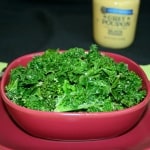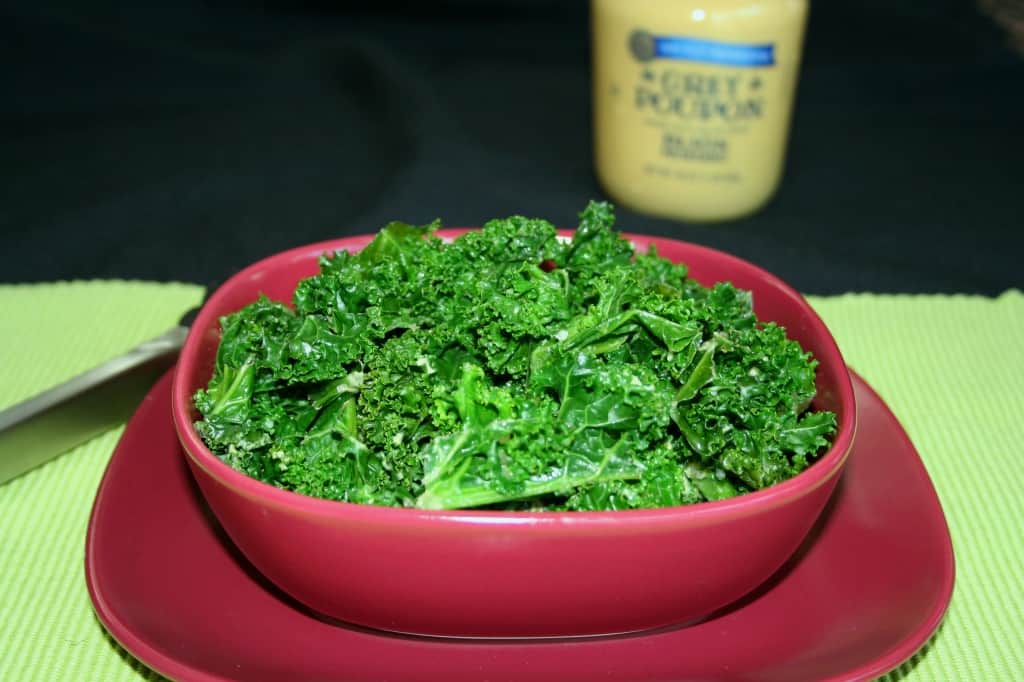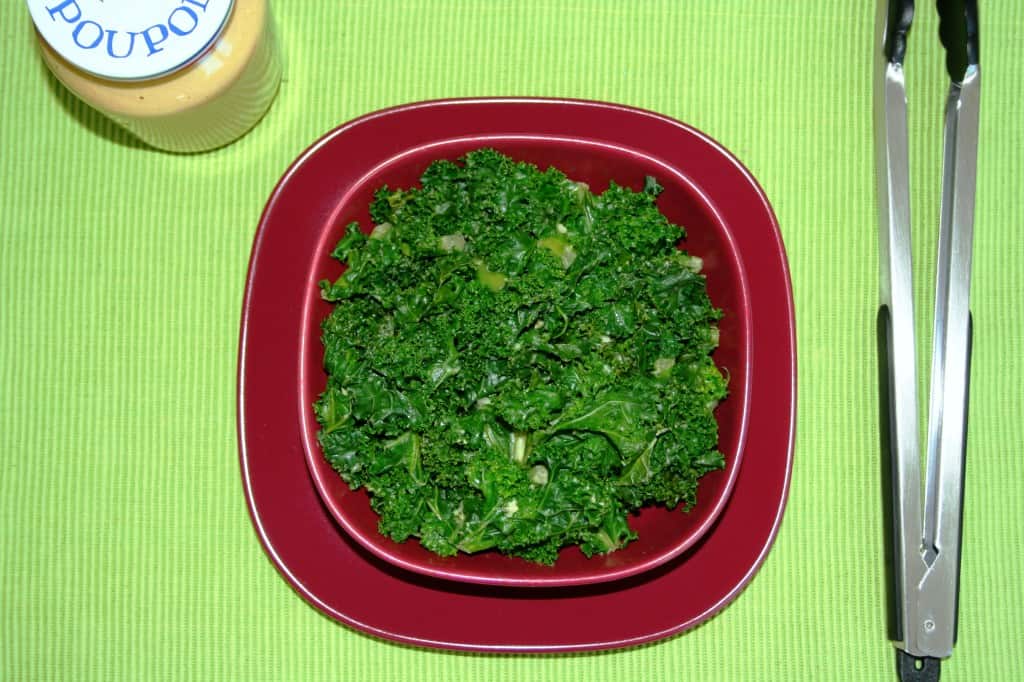Garlicky Dijon Kale
Do you love kale? Great! If you’ve never tried kale and aren’t really sure what to do with it, this recipe for Garlicky Dijon Kale is a great way to try it. Up until a few years ago I thought kale was just a garnish on a salad bar. If you don’t know how to prepare kale it can seem a bit intimidating, what with all that deep green, curly stuff going on. But once you get the hang of it, you’ll be a pro in no time.
Nutritional Information
Many of you know that kale is really good for you but, for those of you who don’t know how nutritious kale is, check this out. One cup of chopped kale contains:
- 36 calories, 5 grams of fiber and 0 grams of fat
- 134% of your daily recommended intake of vitamin C. Gram for gram that is more than twice the vitamin C than in an orange.
- 150 mg of calcium per 100 grams. For comparison purposes, milk has 125 mg of calcium per 100 grams.
- Kale is higher in iron per calorie than beef.
- 10% of the RDA of omega-3 fatty acids, which help fight against arthritis, asthma and autoimmune disorders.
- Additionally, kale excels in three ways: it is full of anti-oxidants, anti-inflammatory nutrients and anti-cancer nutrients in the form of glucosinolates.
Varieties of Kale
Curly kale has ruffled leaves and a fibrous stalk and is usually deep green in color. It has a lively pungent flavor with delicious bitter peppery qualities.
Ornamental kale is a more recently cultivated species that is oftentimes referred to as salad savoy. Its leaves may either be green, white, or purple and its stalks coalesce to form a loosely knit head. Ornamental kale has a more mellow flavor and tender texture.
Dinosaur kale is the common name for the kale variety known as Lacinato or Tuscan kale. It features dark blue-green leaves that have an embossed texture. It has a slightly sweeter and more delicate taste than curly kale.
How to Select Kale
Look for kale with firm, deeply colored leaves and moist hardy stems. Kale should be displayed in a cool environment since warm temperatures will cause it to wilt and might cause flavor changes – and not in a good way. Look for leaves that aren’t wilted, that look fresh and are free from signs of browning, yellowing, and small holes. Choose kale with smaller-sized leaves since these will be more tender and have a milder flavor than those with larger leaves. Kale’s main growing season is the middle of winter through the beginning of spring but you can generally find it throughout the year.
How to Store Kale
Place kale in a plastic storage bag in the refrigerator and remove as much of the air from the bag as possible. It will keep for about 5 days refrigerated. The longer it is stored the more bitter its flavor becomes. Do not wash kale before storing because exposure to water encourages spoilage.
Should I Buy Organic Kale?
The Environmental Working Group has warned that conventionally grown kale tends to be contaminated with high levels of organophosphate pesticides. They (and we) recommend you buy organic kale when possible to avoid potential contamination.
Source: World’s Healthiest Foods www.whfoods.com
Now that you know how good kale is for you, how to buy it and how to store it, here is a terrific recipe to try. This Garlicky Dijon Kale is so easy to make and the flavors add a subtle extra touch to the superstar of the dish – the kale.
Print
Garlicky Dijon Kale
- Prep Time: 10 mins
- Cook Time: 5 mins
- Total Time: 15 mins
- Yield: 2-3 1x
- Category: Side dish
Description
Adding garlic & Dijon mustard to kale is a great way to try this nutritional powerhouse. Oil-free and quick, this side dish pairs well with any meal.
Ingredients
- 5 cups kale (we used dino kale for this recipe but you can use any variety)
- 2 tablespoons water
- 2 garlic cloves, chopped
- 1 tablespoon Dijon mustard
- 1 tablespoon slivered almonds (optional)
- Salt to taste (optional)
Instructions
- To prepare the kale, wash each leaf carefully and shake off the excess water.
- Gently fold the kale in half and hold the thick stem in one hand. With the other hand grab the edges of the leaf and pull away from the stem. For this recipe, you can roughly chop it, rip it into bite-sized pieces or slice into ribbons.
- In a large sauté pan, heat 2 tablespoons of water on medium heat. Add the chopped garlic and stir for a minute or so until it becomes fragrant. Do not overcook the garlic as it can become bitter.
- Add in the kale, stir to mix in the garlic, cover with a tight fitting lid and cook for 3-5 minutes until the kale turns a bright green color. If you overcook it, it will turn a dingy green and not be as firm. It is still good though.
- Remove the lid, stir again and add the Dijon mustard. Stir well until it is mixed in.
- Remove from heat, transfer to a serving dish and add the almonds if you desire.
- You can add a dash or two of salt if you wish.








Thank you for the recipe inspiration! I am saving this in my oil-free recipe ideas for future reference! I wanted to find other ideas for cooking kale other than dry-saute cooking in broth and steaming plain with sea salt while topping with fresh lemon juice. This may work well for as a side dish for some recipes I have, although rarely eat anything with vinegar vs. lemon juice (i.e. mustard).
Thanks again! 🙂 It seems like a lovely idea!
Thanks for visiting Joy. Hope you enjoy this!